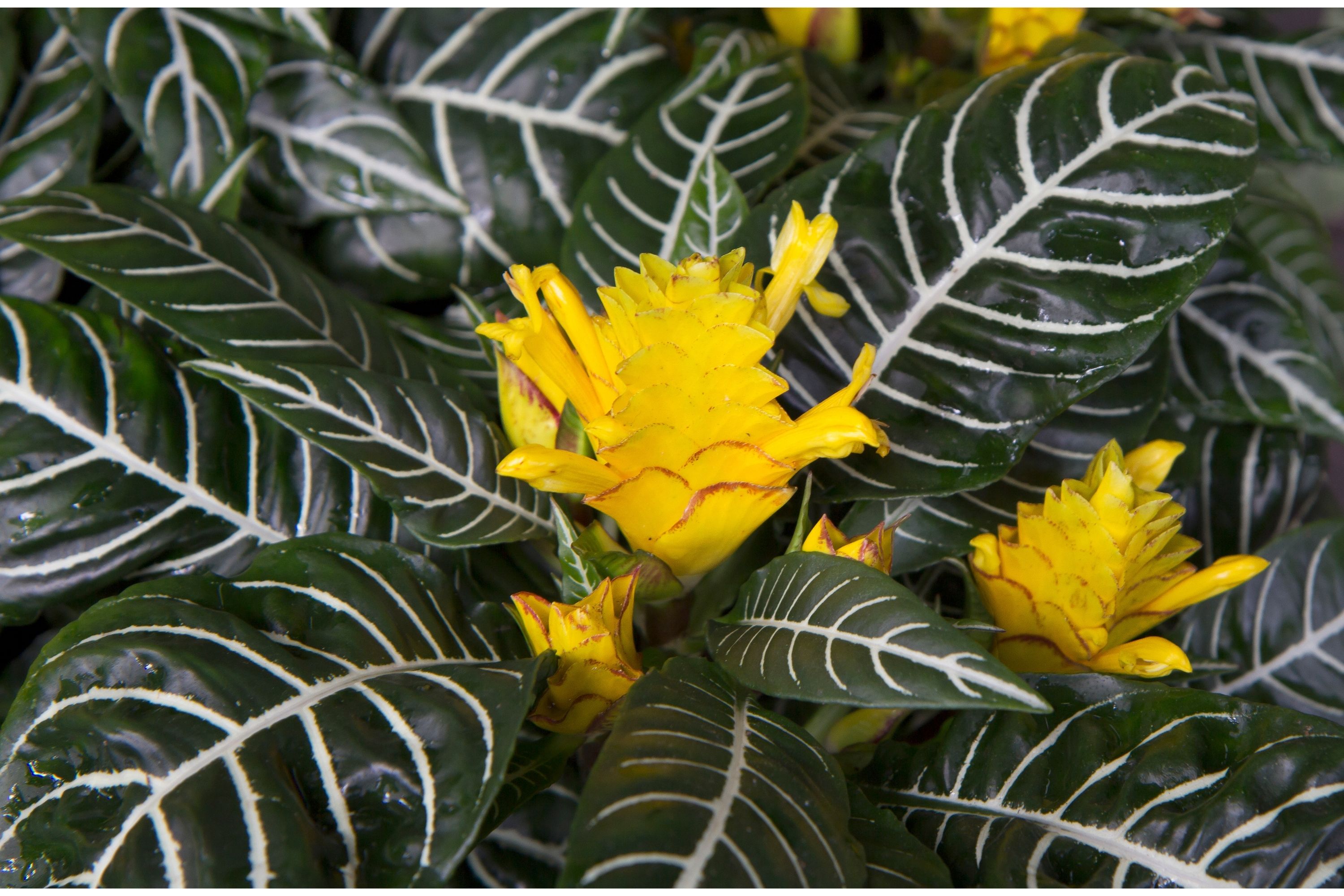Zebra plant
(Aphelandra squarrosa)

Description
Aphelandra squarrosa, also known as the Zebra plant, is a tropical perennial plant that belongs to the family Acanthaceae. It is native to the rainforests of Brazil, where it thrives in the moist and humid conditions of the forest floor. The plant is named after its striking, zebra-like striped leaves, which make it a popular houseplant around the world. In this article, we will delve deeper into the biology, cultivation, and care of Aphelandra squarrosa. Taxonomy and Description The scientific name of Aphelandra squarrosa is derived from the Greek words “aphelis” and “andra,” meaning “naked man” and “male” respectively, which refer to the stamens of the plant. The species name “squarrosa” is Latin for “rough,” which is a reference to the stiff, bristly leaves of the plant. Aphelandra squarrosa is an evergreen shrub that can grow up to 1 meter tall in ideal conditions. The plant has long, lance-shaped leaves that are around 10-15cm long and 3-5cm wide. The leaves have a glossy, dark green appearance, with striking white or yellow veins running through them, which give the plant its zebra-like appearance. The flowers of the plant are also quite striking, with bright yellow bracts surrounding a small, white flower. Cultivation and Care Aphelandra squarrosa is a relatively easy plant to grow and care for, but it does have some specific requirements to keep it healthy and thriving. Light: The plant prefers bright, indirect light and should be kept out of direct sunlight, which can scorch the leaves. Temperature: Aphelandra squarrosa prefers warm temperatures and does not tolerate cold drafts or temperatures below 10°C. Watering: The plant likes to be kept consistently moist, but not waterlogged. Watering once or twice a week, depending on the humidity levels, should be sufficient. Avoid letting the soil dry out completely between waterings. Humidity: The plant thrives in high humidity levels and should be kept in a humid environment. Misting the leaves or placing a tray of water nearby can help increase humidity levels. Soil: The plant prefers well-draining, acidic soil, with a pH range of 5.5-6.5. A soil mix of peat moss, perlite, and sand can work well. Fertilizer: Aphelandra squarrosa should be fertilized every 2-4 weeks during the growing season with a balanced, water-soluble fertilizer. Propagation: The plant can be propagated from stem cuttings, which should be taken from healthy, non-flowering stems and rooted in a moist potting mix. Pests and Diseases: The plant is generally pest-resistant but can be susceptible to spider mites and mealybugs. Overwatering can also lead to root rot, so be sure to let the soil dry out between waterings. Uses and Benefits Aphelandra squarrosa is primarily grown as a decorative houseplant, prized for its striking striped leaves and bright yellow flowers. It is also used in traditional medicine in its native Brazil, where it is believed to have anti-inflammatory and analgesic properties. The plant is sometimes used as a natural remedy for menstrual cramps, rheumatism, and other ailments. Conclusion Aphelandra squarrosa is a beautiful and relatively easy-to-care-for plant that is sure to make a striking addition to any indoor garden. With its distinctive striped leaves and bright yellow flowers, it is a true standout among houseplants.
Taxonomic tree:







